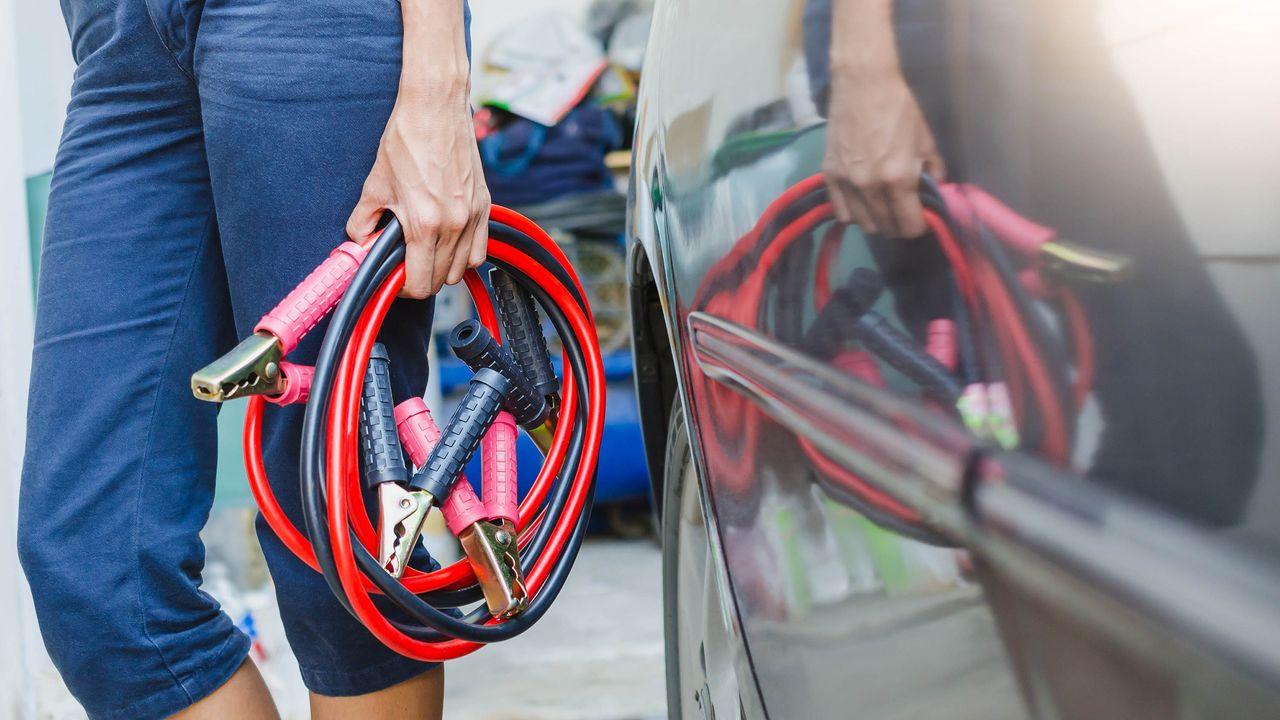Lifestyle
Jump Start Your Car in 5 Easy Steps and Hit the Road

A dead car battery can disrupt your day, but jump starting your vehicle is a straightforward solution that many drivers can manage on their own. Whether your battery has drained due to leaving the lights on or it has simply reached the end of its lifespan, getting back on the road does not require a mechanic or costly roadside assistance. The process involves using jumper cables to connect your dead battery to a functioning one, allowing enough power transfer to restart your engine.
With the right equipment and some safety precautions, you can typically have your car running again in about 15 minutes. For those unfamiliar with the procedure, here are the essential steps to jump start your car effectively.
Gather Equipment and Ensure Safety
Before starting, you will need a set of jumper cables and access to a car with a working battery. Begin by inspecting your dead battery for visible damage such as cracks or leaks. If you notice any issues, it is safer to call a professional rather than attempt a jump start.
Check the jumper cables for frayed wires or damaged clamps, and remove any loose clothing that could get caught in the engine. Ensure no metal objects are touching the battery terminals, as this can create dangerous sparks. These quick safety checks can prevent potential injuries or damage to your vehicle’s electrical system.
Position the Cars and Prepare the Batteries
Next, park the working vehicle close enough so that the jumper cables can reach both batteries. The cars do not have to touch; they just need to be within easy reach of each other. Turn off both engines completely and engage the parking brakes.
Open the hoods and locate the batteries. Identify the positive (+) and negative (-) terminals on each battery; they are usually clearly marked and color-coded. The positive terminal often has a red cover, while the negative is typically black. If there is any corrosion on the terminals, clean it off with a wire brush or cloth to ensure a proper connection.
Connect the Jumper Cables Correctly
Begin by connecting the red jumper cable: attach one end to the positive terminal of the working battery, and the other end to the positive terminal of the dead battery. Next, connect one end of the black cable to the negative terminal of the working battery.
It is crucial to connect the other end of the black cable to an unpainted metal surface in the engine bay of the car with the dead battery, rather than to the negative terminal itself. This grounding point reduces the risk of sparks igniting gases near the battery. Ensure all connections are secure and that the cable clamps do not touch each other.
Start the Working Car and Let It Charge
Start the engine of the working vehicle and allow it to run for 2-3 minutes. This time allows the working battery to begin charging the dead one. Maintain a slightly higher idle by gently pressing the gas pedal to provide more charging power, but avoid revving the engine aggressively.
After a few minutes, attempt to start the car with the dead battery. Turn the key and hold it for up to 10 seconds at a time. If the car does not start, wait another 2-3 minutes before trying again. Refrain from cranking the engine repeatedly, as this can damage the starter motor.
Start Your Car and Remove Cables Safely
Once your vehicle starts successfully, keep both engines running for about 5-10 minutes. This allows the previously dead battery to build up some charge from its own alternator. Before removing any cables, turn off both engines.
Remove the cables in the reverse order of connection: first, take off the black cable from the grounding point, then from the working battery’s negative terminal. Next, remove the red cable from the dead battery’s positive terminal, and finally from the working battery. Be cautious to keep the cable ends from touching each other during removal.
Start your vehicle one last time to ensure it runs independently. For optimal results, drive for at least 15-30 minutes to fully recharge the battery and avoid needing another jump start.
By following these steps, you can confidently jump start your car and return to the road with minimal hassle.
-

 Technology4 months ago
Technology4 months agoDiscover the Top 10 Calorie Counting Apps of 2025
-

 Health2 months ago
Health2 months agoBella Hadid Shares Health Update After Treatment for Lyme Disease
-

 Health3 months ago
Health3 months agoErin Bates Shares Recovery Update Following Sepsis Complications
-

 Technology3 weeks ago
Technology3 weeks agoDiscover 2025’s Top GPUs for Exceptional 4K Gaming Performance
-

 Technology2 months ago
Technology2 months agoElectric Moto Influencer Surronster Arrested in Tijuana
-

 Technology4 months ago
Technology4 months agoDiscover How to Reverse Image Search Using ChatGPT Effortlessly
-

 Technology4 months ago
Technology4 months agoMeta Initiates $60B AI Data Center Expansion, Starting in Ohio
-

 Technology4 months ago
Technology4 months agoRecovering a Suspended TikTok Account: A Step-by-Step Guide
-

 Health4 months ago
Health4 months agoTested: Rab Firewall Mountain Jacket Survives Harsh Conditions
-

 Lifestyle4 months ago
Lifestyle4 months agoBelton Family Reunites After Daughter Survives Hill Country Floods
-

 Technology3 months ago
Technology3 months agoUncovering the Top Five Most Challenging Motorcycles to Ride
-

 Technology4 weeks ago
Technology4 weeks agoDiscover the Best Wireless Earbuds for Every Lifestyle









